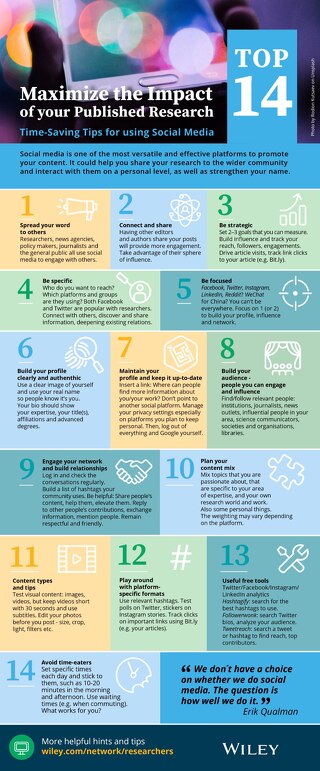how-to-judge-the-news-value-of-your-paper
May 22, 2014
Journalists at all levels of the media, from the local weekly newspaper to 24 hour rolling television news, share the common traits of being perennially understaffed and under pressure to find stories under tight deadlines. So how do you grab their attention?
Here are ten things to consider when evaluating your paper for publicity:
1. Relevance to Readership/Community
Who do you imagine will read and engage with your paper? Readership is the most important aspect of a news article. The relevance of your story will depend entirely on which community you are targeting. When looking at your paper consider which groups are likely to be interested. Will it generate controversy only in one specific scientific field – or does it have broader interest? Would a reader of Die Zeit or USA Today be as interested in your research as someone with a PhD in the subject?
2. Meaningfulness
How will this story affect people in everyday life? If your research is mass media newsworthy, then its ramifications won’t only be felt in the laboratory or on the conference floor, it will have a direct impact on daily life.
3. Discovery
For a paper to be truly newsworthy, it must herald a new discovery or provide conclusive proof of an existing theory. A paper which simply agrees with a theory already in the public domain is not going to attract any attention in the wider media.
4. Impact/Scale
How many people will your story affect? How long was the study? How widely felt will the repercussions be? Bigger is better in the world of news. A paper on rising sea levels and flood risks throughout Europe is obviously going to be more newsworthy than a drought in a lake in Wuppinton-on-sea.
5. Time Scale
In the age of 24 hour rolling news, internet blogging, and social media a story can spread like digital wildfire and a print journalist is unlikely to publish it, if it has already gone around the world via blogs. News is very time dependent; it must be new on the day it goes to print. If the news item contained within your paper has already entered the public domain then its news value is inherently compromised.
6. Development
If your paper is not announcing a new discovery, is it building upon an existing story which has caught public interest? Do you have a new slant on an old story?
7. Controversy
What makes your paper stand out from the other papers in the field or in your journal? Does it have a unique selling point? Will it raise eyebrows on the morning commute? Controversy in a news sense does not mean outlandish or odd, it merely means different. The old media adage says that Man Bites Dog is a far more interesting headline than Dog Bites Man simply because it bucks the trend.
8. Source
This is perhaps the easiest factor of news value from a science perspective. All a journalist needs to know is that the paper comes from a qualified academic/researcher and from a respected reputable journal. A reputation is damaged by sending out releases which lack news value.
9. Angle
The big news tends to be bad news – War generates more coverage then peace and bus crashes make more headlines then the hundreds of buses which arrive safely at their destination. The angle does not need to be sensational. Indeed, if a story strays from fact in the slightest degree the source will no longer be trusted by the journalist or the readership. Remember, good news value does not have to equate to good news.
10. Human Interest
Are the findings something which people can relate to, either through experience or on an emotional level? Will it impact on their everyday lives? If your story has a human interest angle, it may be news. Thousands of magazines, papers, and freelancers are dedicated to human interest stories. Sometimes these stories are of the ‘parrot killed my grandmother' variety or, occasionally, of the cheerier ‘parrot owning grandmother wins lottery’ persuasion – either way they each have an ‘it could happen to me’ angle. For example, papers on why people feel emotions, the psychology behind falling in love, or why dogs develop ‘a guilty look’ all have this angle.
If your research has news value, you may wish to contact the press team at your institution or funding body. Visit the Wiley Press Room for examples of successful press releases, Wiley’s embargo policy, and a quick guide to PR for authors.













